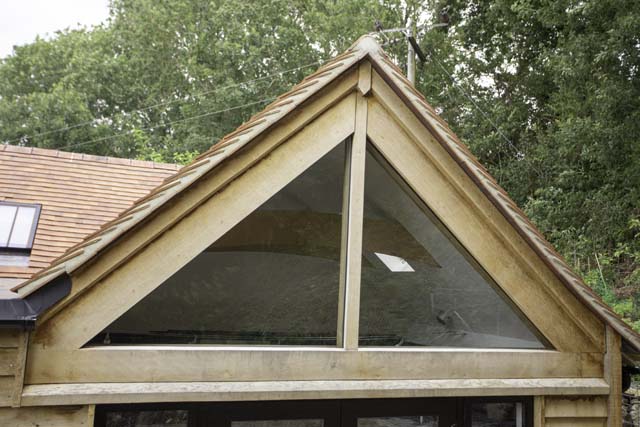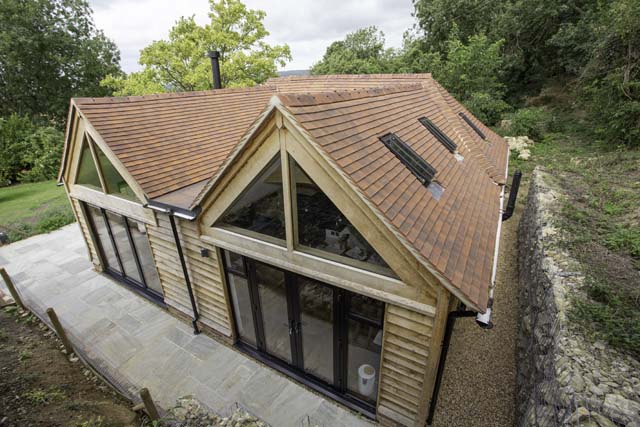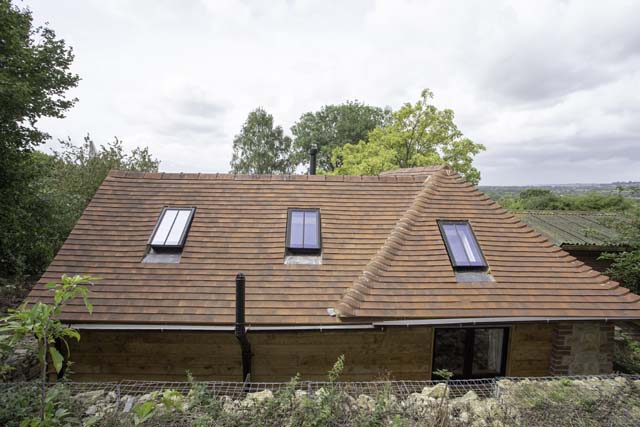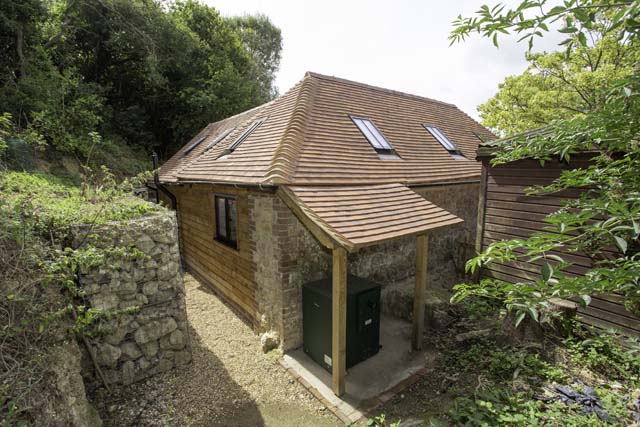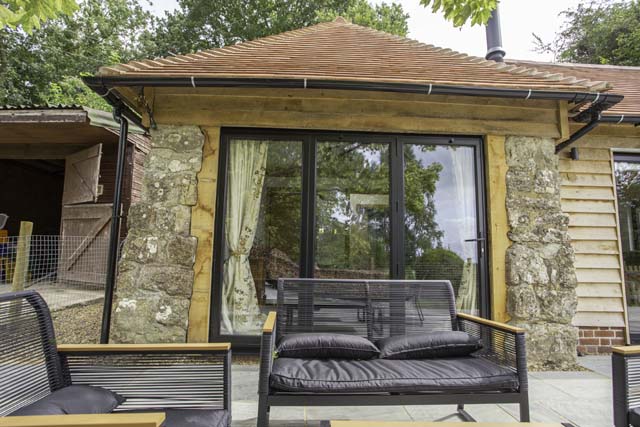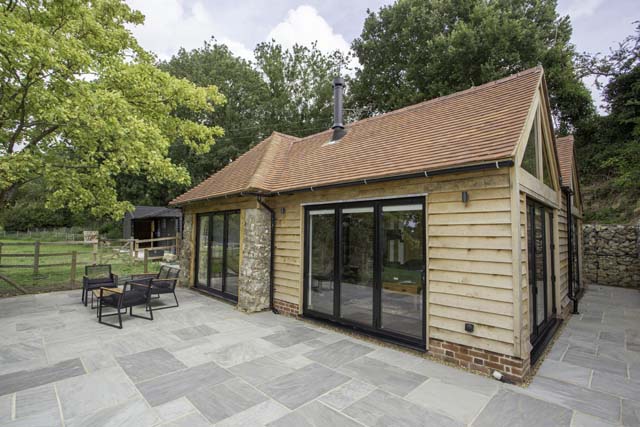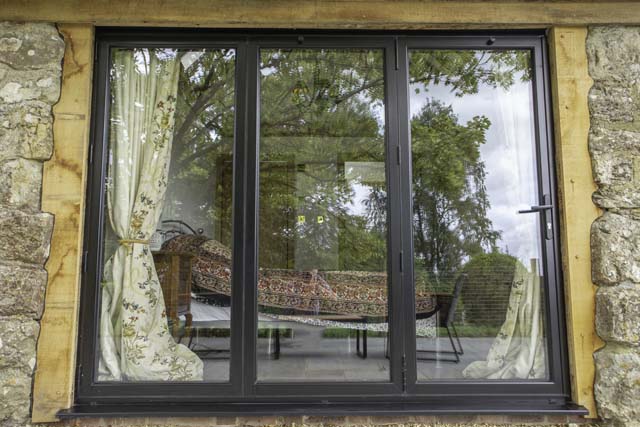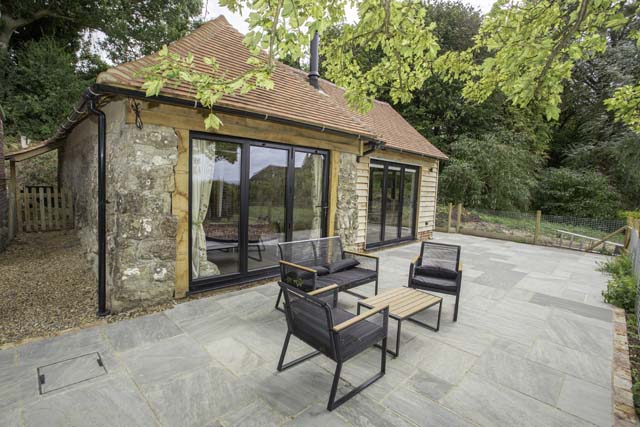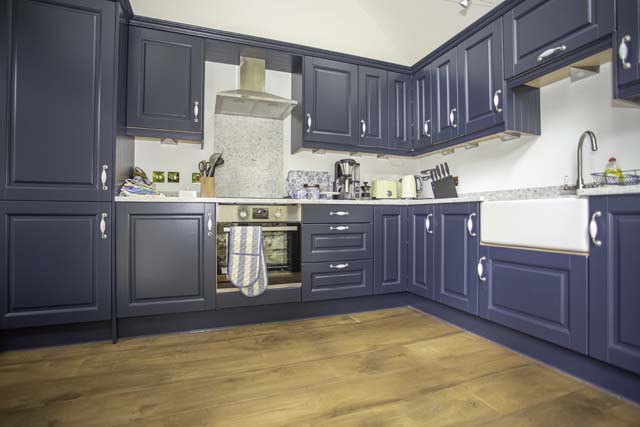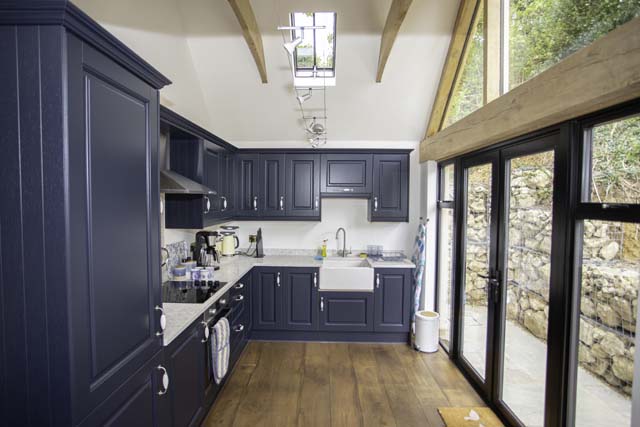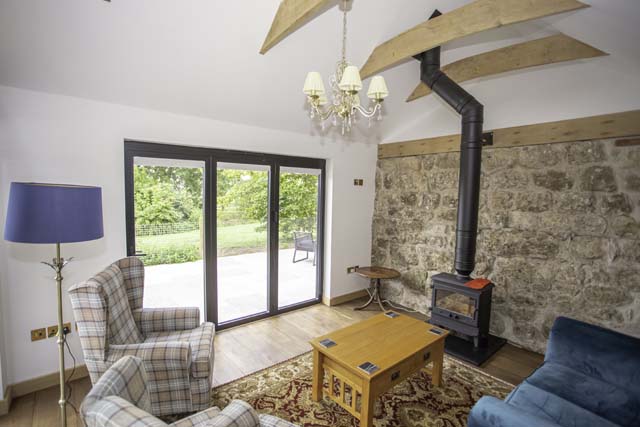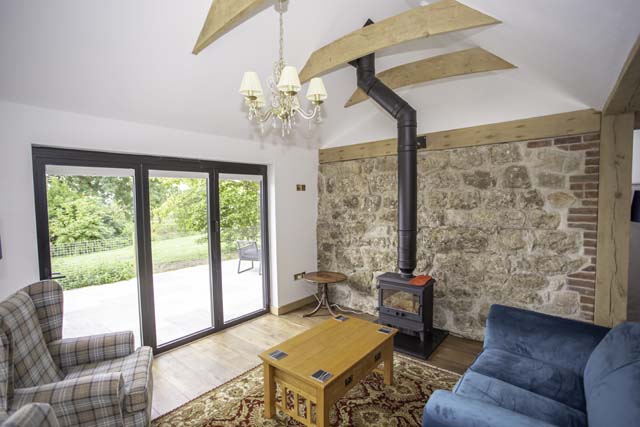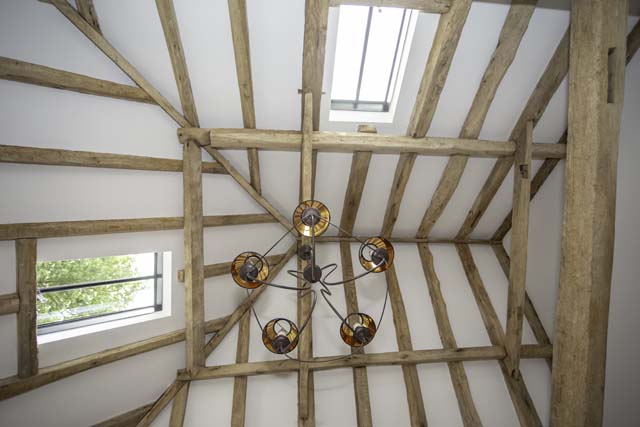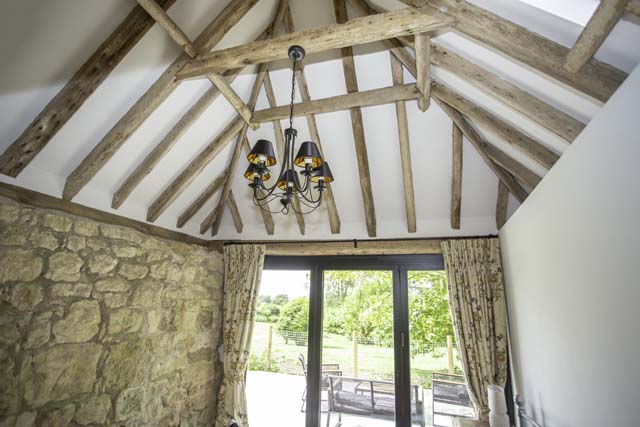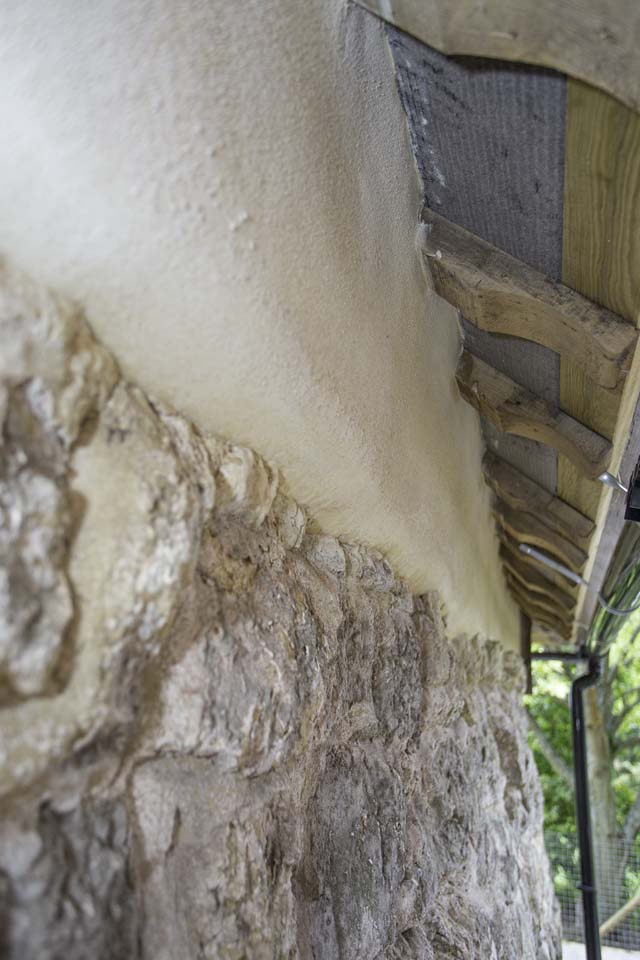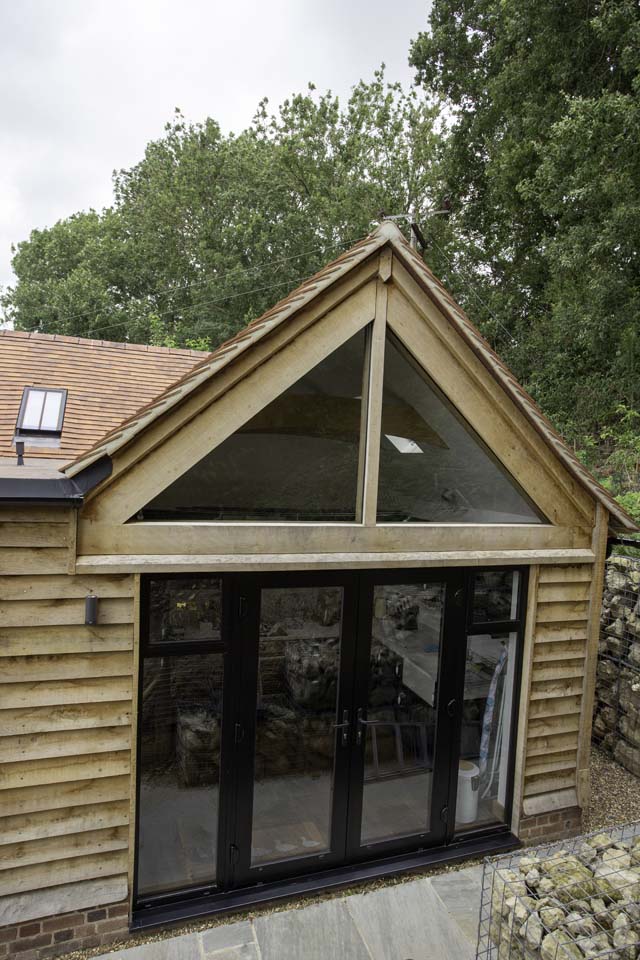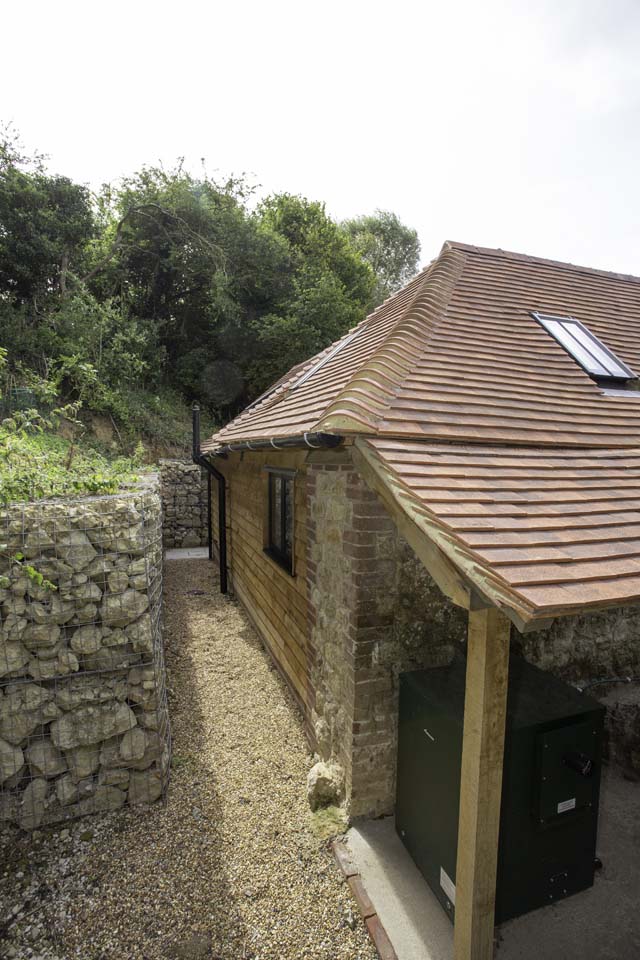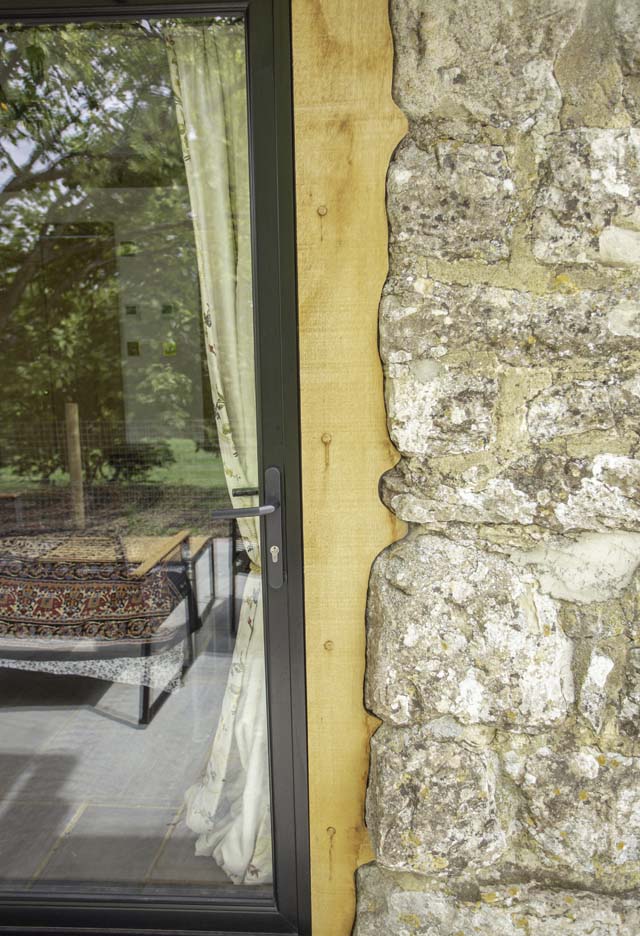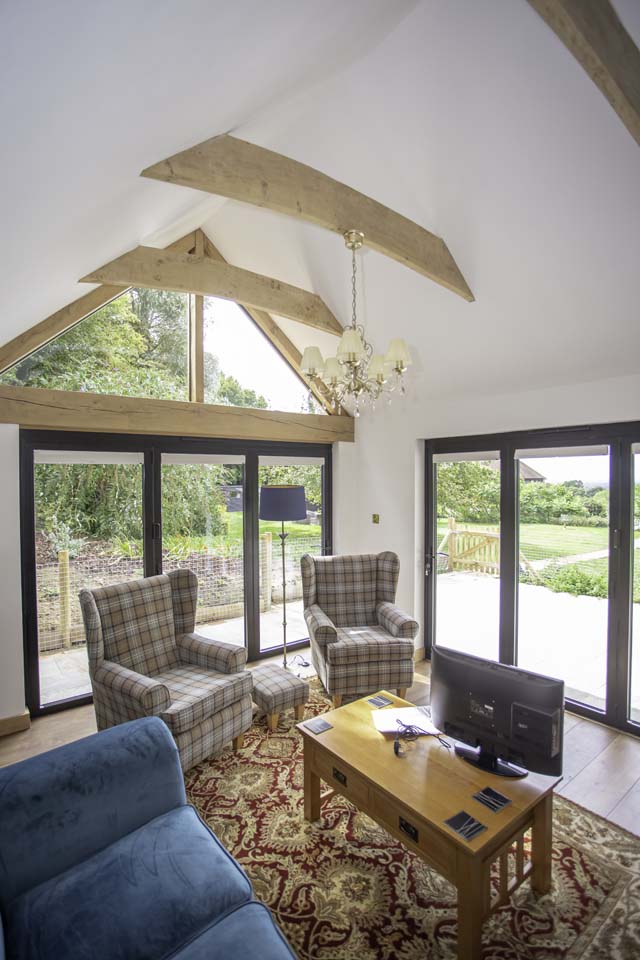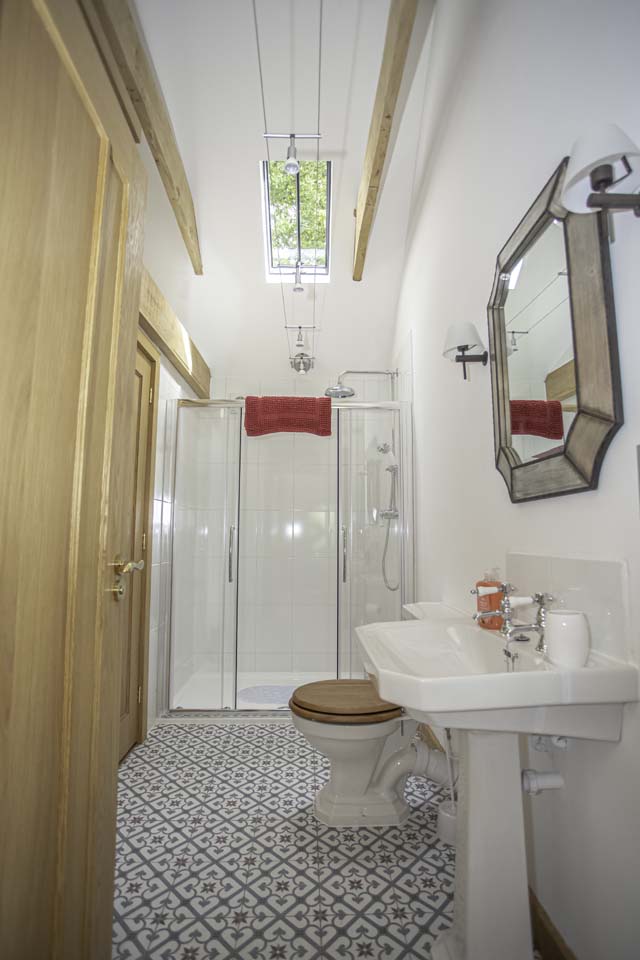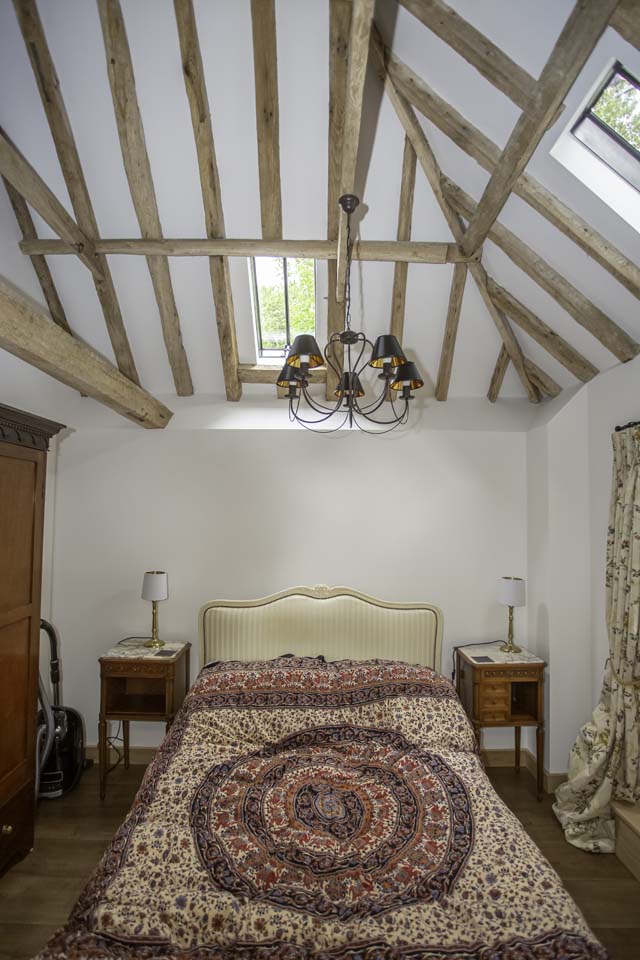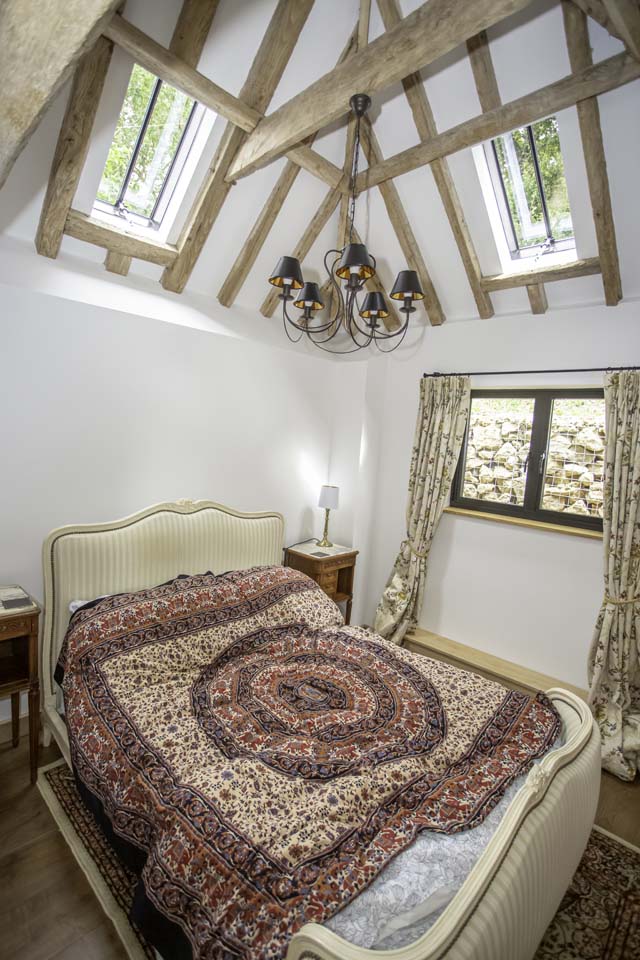Categories
Our latest project, Hollis Oast this beautiful period building had humble beginnings, initially starting its life as a pigsty. Our customers wished to transform this former agricultural building into a modern guest house while retaining all of its period features.
Preparation
Ragstone made up the majority of the building the teams first port of call was to remove the greenery and debris around the Ragstone structure, then start digging out the bank.
Right from the start, it seemed that the bank was consuming the back of the building. As digging commenced, we realised that the pigsty had in fact been extended into the bank itself.
Ideally, the team were trying to keep the traditionally jointed oak timber roof as one without destroying it. Taking the roof apart would have broken the joints across the structure.
This altered our approach slightly, the team stripped off the original Kent peg tiles, once completed we used acro’s to pin-up and support the roof.
During the pinning up process, all of the ragstone present in the bank started to fall away. All in all, to get to the point we could begin the conversion process the team dugout around 30 to 40 tonnes of and soil and ragstone.
The team extended the footings into the freshly dug area to enable us to build up the back of the original pigsty and make it stable. During the process, we needed to keep the acro supports underneath the roof to prevent it moving and at the same time take the pressure off the original ragstone walls.
The original walls were around 600mm thick and crudely constructed with infill and soil really the bare minimum to allow the building to stand; this made the process of piecing in reasonably tricky.
The Build
In short, the above groundworks process involved us digging out new footings for the extension, strengthing the original ragstone and maintaining the back half of the building. The team poured new 2 metre deep footings all the way round, built up an oversight with an inner course of concrete blocks and an outer course of handmade stock brick.
In total, we built up five courses of bricks on top of which the team created a softwood timber frame. The frame is intertwined with the oak frame that we built to support the roof and the Oak lintels over the top of the bi-fold doors.
We then sheathed, insulated, and Oak weatherboarded the structure.
To bring the roof to a modern standard of energy efficiency, the team carried out the following steps; plaster boarded, created a vapour barrier, and finally insulated with 120ml of Celotex.
The team then counter batoned and used handmade clay tiles for the roof. The new part of the roof was created with 6’2 softwood timbers and oak collars to preserve the traditional look.
We allowed for seven conservation roof lights, which differ from Velux windows in the following ways. These fully metal windows are welded into one sealed unit then tiled over.
Conservation roof lights are operated with a winder. These windows, although dearer than Velux do give an authentic rustic look and will far outlast their modern counterpart.
Internally the team fitted an oak floor with a traditional extra matte stained finish, underneath which we installed underfloor heating. Our plumber installed a new combi Worcester bosch boiler making the building extremely energy efficient.
External Finish
Externally the building features oak weatherboarding, and direct glazing to allow as much natural light into the building as possible. Under the eaves we used lime mortar plastering to adjoin the materials, this was carried out by the traditional plasterer paul marshall.
The team also created a small canopy to protect the boiler.
Along the back of the building, the excavation process had created a steep two-metre bank. To retain this, we put in steel gabions wired them up and filled them with the ragstone dugout during the preparation of the footers. This attractive feature allowed us to make use of the ragstone and saved our customer a substantial sum of money as hardcore is costly to remove.
Abacus Kitchens and Essential stone supplied the kitchen and worktops although we fitted them, KCS Lenham supplied the bi-fold doors. Read more about our building restoration service

